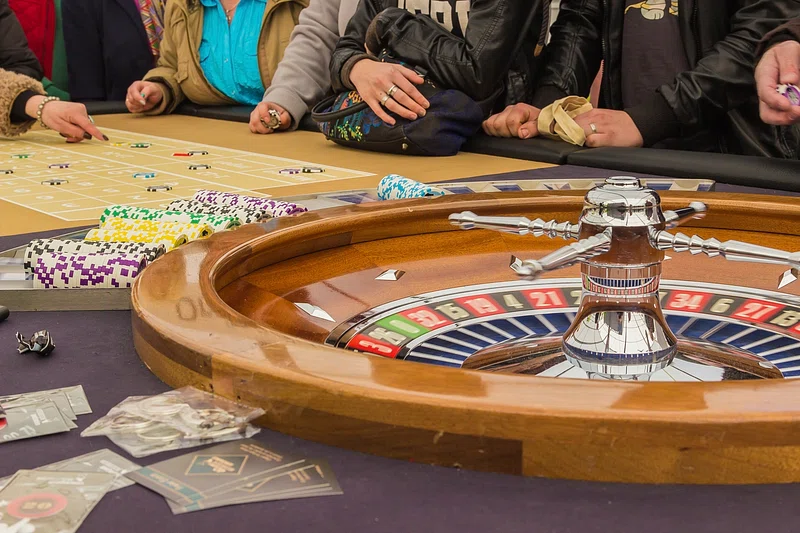Slot games, a staple of casinos and gaming establishments around the world, have undergone an incredible evolution over the years. From the mechanical simplicity of classic one-armed bandits to the vibrant, immersive experiences of modern video slots, the journey of slot games reflects broader changes in technology, player preferences, and gaming culture. In this article, we’ll explore the key milestones in the evolution of slot games, highlighting the innovations that have transformed them into the thrilling experiences we know today.
The Birth of Slot Games: Mechanical Simplicity
The history of slot games dates back to the late 19th century when Charles Fey invented the first automatic slot machine, the Liberty Bell, in 1895. This mechanical machine featured three spinning reels adorned with five symbols: horseshoes, diamonds, hearts, and, naturally, the Liberty Bell. Players would pull a lever—hence the term “one-armed bandit”—and hope for a winning combination. The simplicity of these machines attracted players quickly, and by the early 20th century, slot machines became a common sight in bars, saloons, and gambling halls.
The Rise of Electro-Mechanical Slots
By the 1960s, the introduction of electromechanical technology revolutionized slot games. The first fully electromechanical slot machine, Money Honey, was created by Bally Technologies in 1964. This innovation allowed for more complex gameplay, including multiple paylines and larger payouts. Players could now place their bets using coins, and the automated systems meant that machines could handle larger volumes of play. The introduction of jackpots also increased popularity, turning slot machines into major revenue generators for casinos.
The Digital Revolution: Video Slots and Beyond
The 1970s and 1980s marked the advent of video slots, changing the landscape of gaming forever. In 1976, Fortune Coin Co. released the first video slot machine, which used a television display instead of physical reels. This provided game developers with the creative freedom to design more engaging experiences, allowing for innovative themes and intricate bonus features. Video slots quickly caught on, and by the late 1980s, casinos were increasingly replacing traditional machines with video equivalents.
With the growth of online casinos in the late 1990s, the popularity of slot games surged. Players could now enjoy their favorite games from the comfort of their homes, leading to an explosion of themes, graphics, and gameplay mechanics. Online slot developers began to integrate animations, interactive elements, and progressive jackpots, further enhancing the player experience.
High-Tech Features: The Modern Age of Slot Games
The 21st century has seen a remarkable transformation in slot games, driven by technological advancements and changing player demographics. Modern slots boast high-definition graphics, elaborate themes, and soundtracks that mirror blockbuster films. Developers are now leveraging advanced computer technology, including HTML5, to create seamless gaming experiences across devices—desktop, tablet, and mobile.
Bonus Features and Gamification
One of the most significant trends in modern slot games is the inclusion of advanced bonus features and gamification elements. Players can now enjoy various bonus rounds, free spins, and pick-and-win games that keep them engaged and excited. The narrative approach to gameplay is also gaining traction, with slots intertwining storytelling and character development, creating an immersive adventure for players.
The Role of Artificial Intelligence
Artificial intelligence (AI) is beginning to influence slot games as well, shaping everything from personalized player experiences to responsible gaming initiatives. AI algorithms can analyze player behavior, providing tailored recommendations and promoting responsible gaming practices by identifying at-risk behaviors early.
Virtual Reality and Augmented Reality
Looking to the future, technology like virtual reality (VR) and augmented reality (AR) is poised to further transform the gaming experience. A handful of developers have already experimented with VR slots, allowing players to enter a 3D casino environment and interact with games in completely new ways. As VR and AR technologies become more mainstream, these concepts have the potential to redefine how players experience slot games.
The Future of Slot Games
As slot games continue to evolve, they reflect broader trends in society and technology. What began as a simple mechanical device has transformed into a complex fusion of art, storytelling, and technology. The future will likely see even more integrations of VR, AR, and personalized gaming experiences, catering to the changing preferences of players.
In conclusion, the evolution of slot games from classic reels to high-tech features reveals not only advancements in gaming technology but also the enduring human desire for entertainment and engagement. As players’ expectations continue to evolve, the world of slots will undoubtedly keep pace, ensuring that this beloved pastime remains as captivating as ever.




